“I was 32 when I started cooking; up until then, I just ate.”
—Julia Child
As a kid, my parents cooked, and I watched. I loved seeing the flames dance in their pans. And sometimes when my Mom would make Spaghetti, she’d use enough cayenne pepper to light my tongue on fire.
Now I cook most nights of the week, sometimes inviting my friends over to dine together. I want each of my guests to get the same thing at my table as they would at church. So we use slightly less cayenne.
I spend hours chopping and seasoning each piece of food, focused on the feeling its taste will spark when it pops with the rest of the ingredients.
I talk to the onions, saying I appreciate their crunchy bite. I salt the tomatoes, telling them my dish wouldn’t taste the same without them. And I thank the meat for giving its life to sustain ours.
Each piece of food is selected and prepared with intention, before being eaten with gratitude by a table full of people.
And each meal leaves its own mark on my heart. The reward is the feeling I receive when I see the look on your face when you taste what our combined energies created.
Because, let’s face it, food always tastes better when shared with great company. And simply by being in the building when someone else is cooking, you add your energy to the food shared by all.
But I didn’t always cook like I do now. And learning my own way around the kitchen as an adult has taught me more than I expected it would.
Cooking is a Journey
When I lived in a Major City, I had access to any ethnicity of food imaginable, at nearly any time of day. I’d press the ramen button on my phone, kiss $50 goodbye, and an hour later I’d have lukewarm soup.
I never enjoyed ordering food through apps, but I did it all the time because it meant I didn’t need to expend any real effort to feed myself. The food never tasted as good as it would have when fresh, but it was easy.
When I moved to a Rural Area though, everything changed. There were no Thai spots, no tacos that hit like the ones back home did, and the only Indian Restaurant in town made their food too sweet for my palate.
So I learned a bit about masala to make my own Indian dishes. And bought curry powder to play with Thai food. Then some ox tail, beef femurs, and star anise to make Pho broth.
I ordered Sichuan Peppers online, and Chinese Pickles for Dan Dan Noodles, and then a friend tipped me about a dingy Chinese/Mexican market in Sioux City, Iowa, and I finally felt at home in the Midwest when I went inside.
I remember thinking to myself, thank god this exists here. I can finally get the stuff I need.
With access to dried guajillos, anchos, and hatch peppers, I started making pepper purees for Mexican dishes, causing a switch to flip in my mind. And suddenly I realized how to elevate my chili recipe to a whole new level.
And somehow, by combining Indian, Chinese, and Mexican Spices, I’ve made some of the best stir fry dishes I’ve ever tasted, each taking less than 10 minutes to cook.
When I am cooking an impromptu dish with only the ingredients I have on hand, I feel myself reach the same flow state which springs my art. Each spice speaks, and the Spirit directs my hand.
And every time a dish comes together with the perfect balance of new flavors, I experience a sense of childlike wonder, thinking, it worked—IT WORKED, as their flavors dance on my tongue.
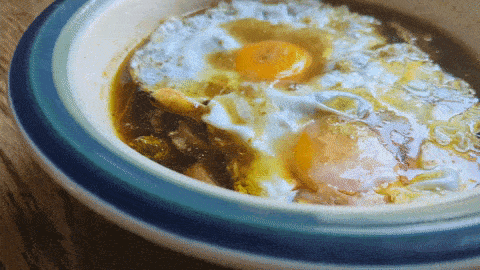
Your Taste Shapes the Food
Whether my food is to your taste or not is up to you. But if I know your taste in advance, I will cook specifically to suit it.
And over the years I’ve spent in the kitchen, I’ve found one thing to be truer than true. The old saying about cooking with love is correct.
If you cook with loving intention, speaking beautiful words over your food, you will change the structure of the water the food is made of, resulting in a more beautiful taste.
Think about this.
You’re at a backyard summer barbecue, hosted by one of your best friends. They have a cold drink in their hand, and a huge smile on their face as they grill 20 hamburgers at the same time, for the crowd.
The burgers are slightly overcooked, but, whoa, you bite into it, and it tastes incredible.
There’s nothing fancy at all. Just meat and bread, with some wet onion, plus whatever else you added to it. Yet, there’s nothing you’d rather eat in that moment, surrounded by people you love.
Realize, you’re also eating all those joyous feelings your host had while cooking for you. And you’re tasting the love in the air. Those feelings are an ingredient in your food.
Now, compare that burger to the last one you had out at a restaurant. Of course, there’s a sliding scale of experience here, but can you immediately feel the difference?
Perhaps the person cooking your $15 burger in that hot windowless cubby behind the far wall, is upset about whatever, and doesn’t want to be at work.
Maybe they’re feeling bitter and alone after splitting from their significant other, yet there they are, cooking your food, pouring those feelings into it.
So their brooding energy bubbles like the hot oil your fries are dunked in, and you eat it with each bite of your double western deluxe.
There is more than one reason why your stomach doesn’t feel right after eating fast food.
It’s not just the food you’re eating.
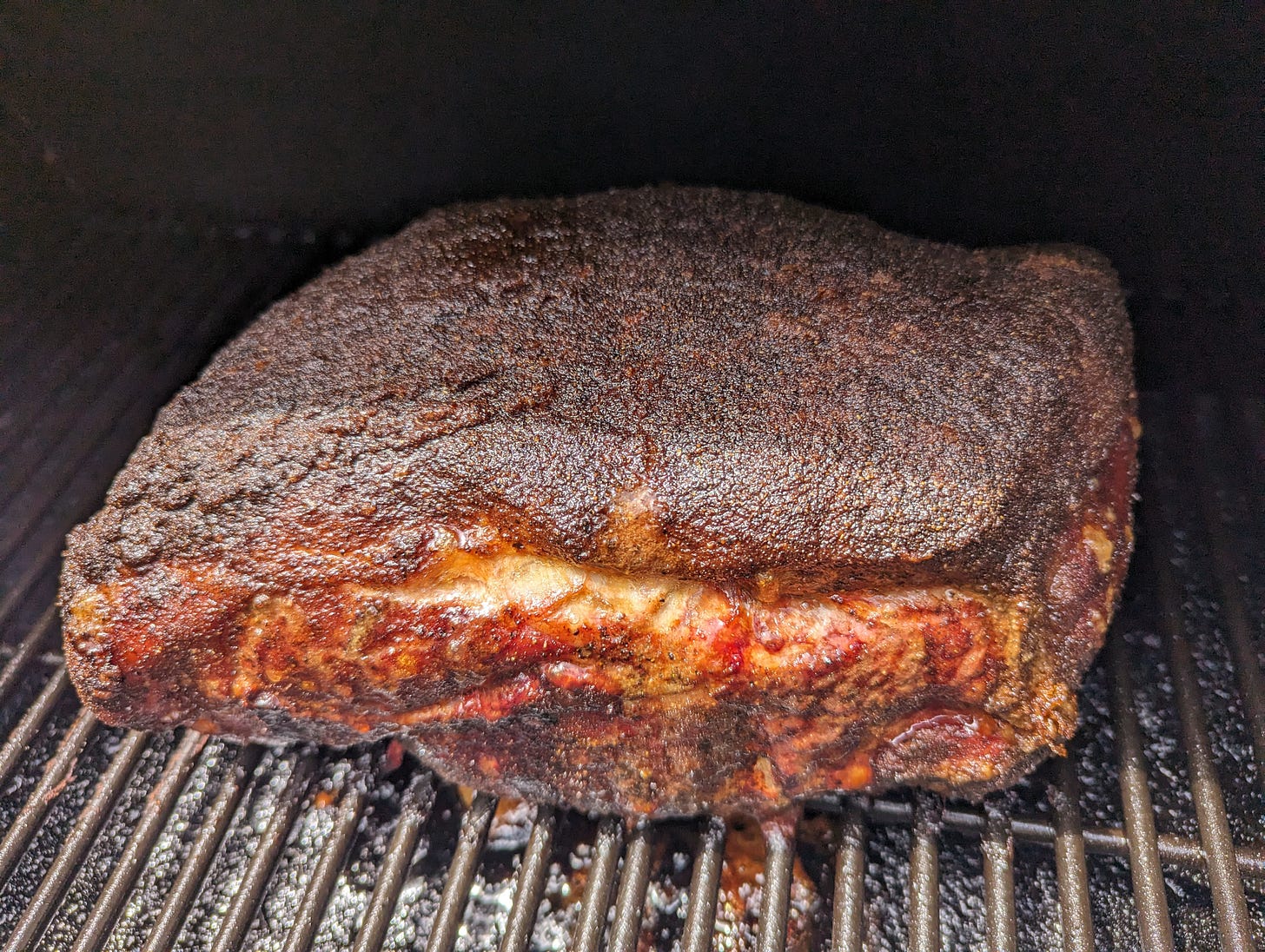
Hue-Man’s Kitchen Tips
Here’s a quick outline of a few rules we do our best to live by in T.H.E. Kitchen.
I’m still a Hue-Man, and every once in a while I still go out for a tasty treat. But when I’m home, I do my best to maintain the same diet which helped me lose over 100lbs, while keeping it off.
So here are my Top 5 Kitchen Tips:
Sing to Your Food While You Prep It.
Singing offers a range of health benefits, so perhaps that’s why the Italians love to write songs about food? Ha, I jest.
Last week I made red sauce for the first time in many months, and I sang songs to it while it cooked.
Not kidding, this was the first time I’ve done this, and it turned out the best of all my attempts yet. I’m sure the tablespoon of honey helped too ;-P
Stick to Tallow, Lard, Butter, Ghee, Olive Oil, & Coconut Oil.
Let Vegetable Oil stay a machine lubricant.
I lost a significant amount of weight by switching from vegetable / canola oil to Beef Tallow. Combined, of course, with increased physical activity.
In the process I’ve discovered how real fats taste much better, and how they are rich in Omega 3 fatty acids.
Hexane (solvent) extracted fats like veg and canola are saturated with Omega 6, and oxidize easily.
Be warned though, once you switch, after a few months, your body will re-adjust, and those mcD’s fries will really mess you up. But your allergies will die down at the same time, and you won’t sunburn like you used to, so it’s a fair trade off.
There is a ton of information about seed oils versus natural fats online, as well as the questionable origin of Big Canola’s “heart healthy” stickers. Do your homework if you’re interested.
I’m not a professional. Just a person who this lifestyle works wonders for, after practicing it for a while.
Its also kind of funny that I needed to start eating more butter to lose weight.
Use Cast Iron.
A good cast iron pan should last you the rest of your life, and can be purchased for somewhere around $30, brand new.
Grab an unseasoned lodge pan if you can find one, and season it yourself with beef tallow or pork fat. These fats are highly resistant to heat, so don’t use fats like olive oil or the dreaded paste which shall never be named here again…
crisco.Beware not to use too much fat. You want just enough for a thin film over the entire pan—top, bottom, and handle, each time you put it in the oven.
Do this at least 5 times before you use your new or refurbished cast iron pan.
Bake at 450°F for 50 minutes, upside down on the top rack, with foil lining the bottom rack to catch any drips. And then let the pan rest on top of your oven until it falls back to room temperature, before repeating the process.
If you season your cast iron correctly it will eventually become non-stick, and you’ll be able to use it to cleanly flip fried eggs.
Cast iron more evenly distributes the heat across your pan, resulting in better tasting food.
Thank Your Food Before You Eat It.
The common trope where the family sits around the table and says Grace before a meal is a beautiful one. Remember, speaking over your food actually changes the structure of its water.
The other common saying, “you are what you eat,” is true. The food you eat literally becomes your body.
Protein for your muscles, fat for your brain, fiber for your rear end.
We build the house we want to live in.
Try Cooking Low and Slow
There’s a reason why ribs, and brisket taste so good. These start as tough cuts of meat, because they’re working muscles.
But cooking at a lower temperature, over many hours, they become tender and delicious.
If you’re new to Barbecuing, Smoking, and roasting large cuts of meat, I’d highly suggest starting off by cooking only with salt.
Salt only cooking teaches you what your meat is supposed to taste like. And once you understand the base flavor profile for your roast, you can experiment with different seasonings which bring out the best in your meat’s natural flavor.
Many cooks combat flavor by smothering it in sauce. But chefs work with the flavor.
Large, tough cuts of meat, are always cheaper than buying ribeyes or whatever. And with your time, love, and patience, you can make them taste far better.
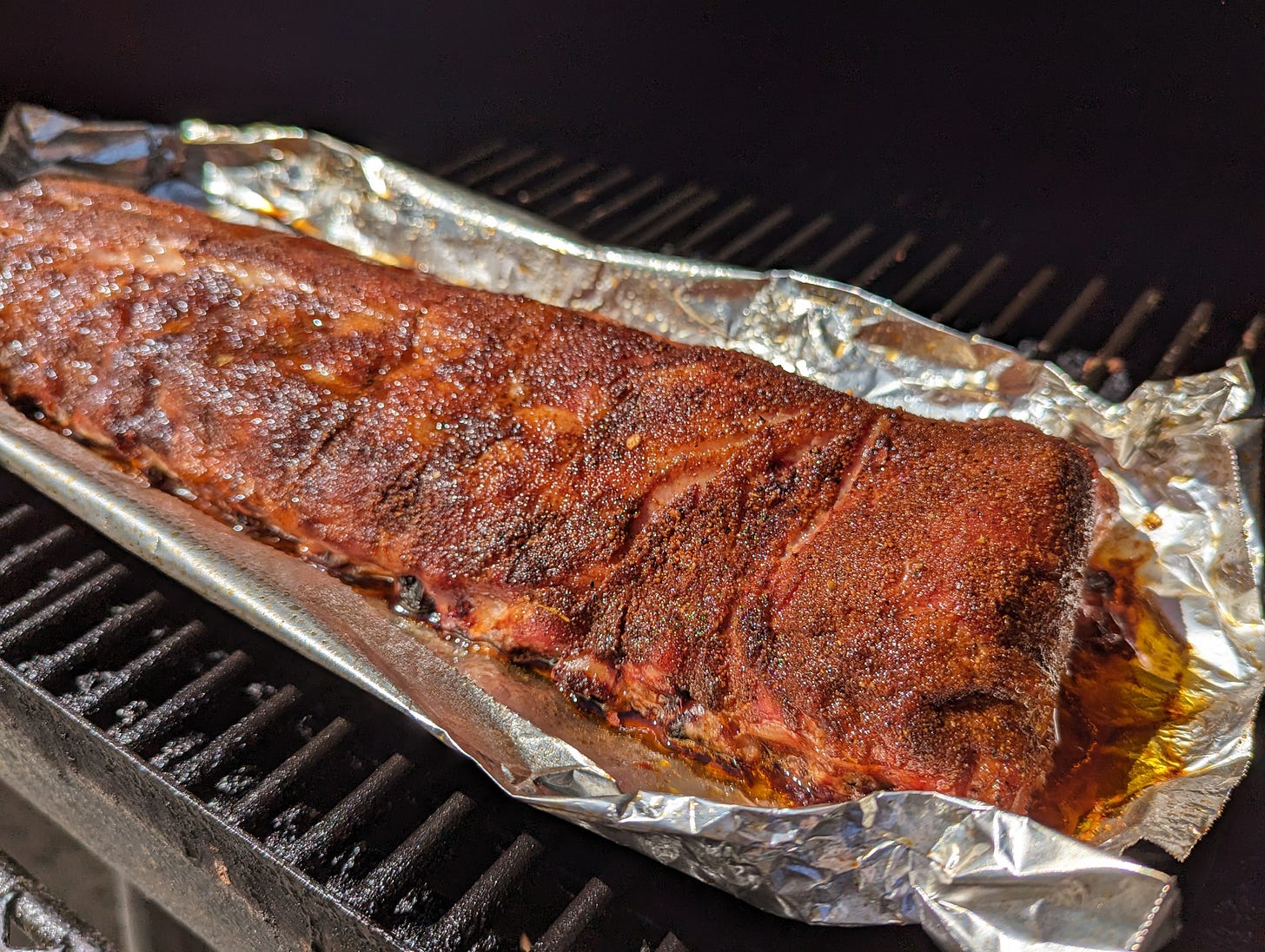
What do you like to cook?
If you’ve read this far, you’re probably interested in cooking as well. So I’d love to learn from you.
Please drop a comment below, and share your favorite recipe to cook at home. I’m looking for a few new tasty dishes, and would love to try your specialty.
Until next week, my dear friends. I trust you will continue being well.

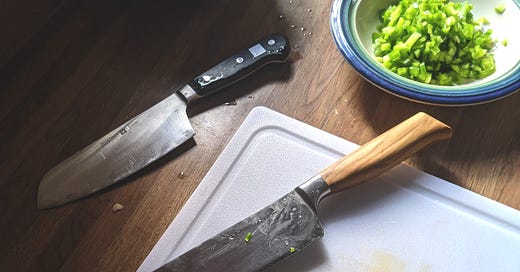



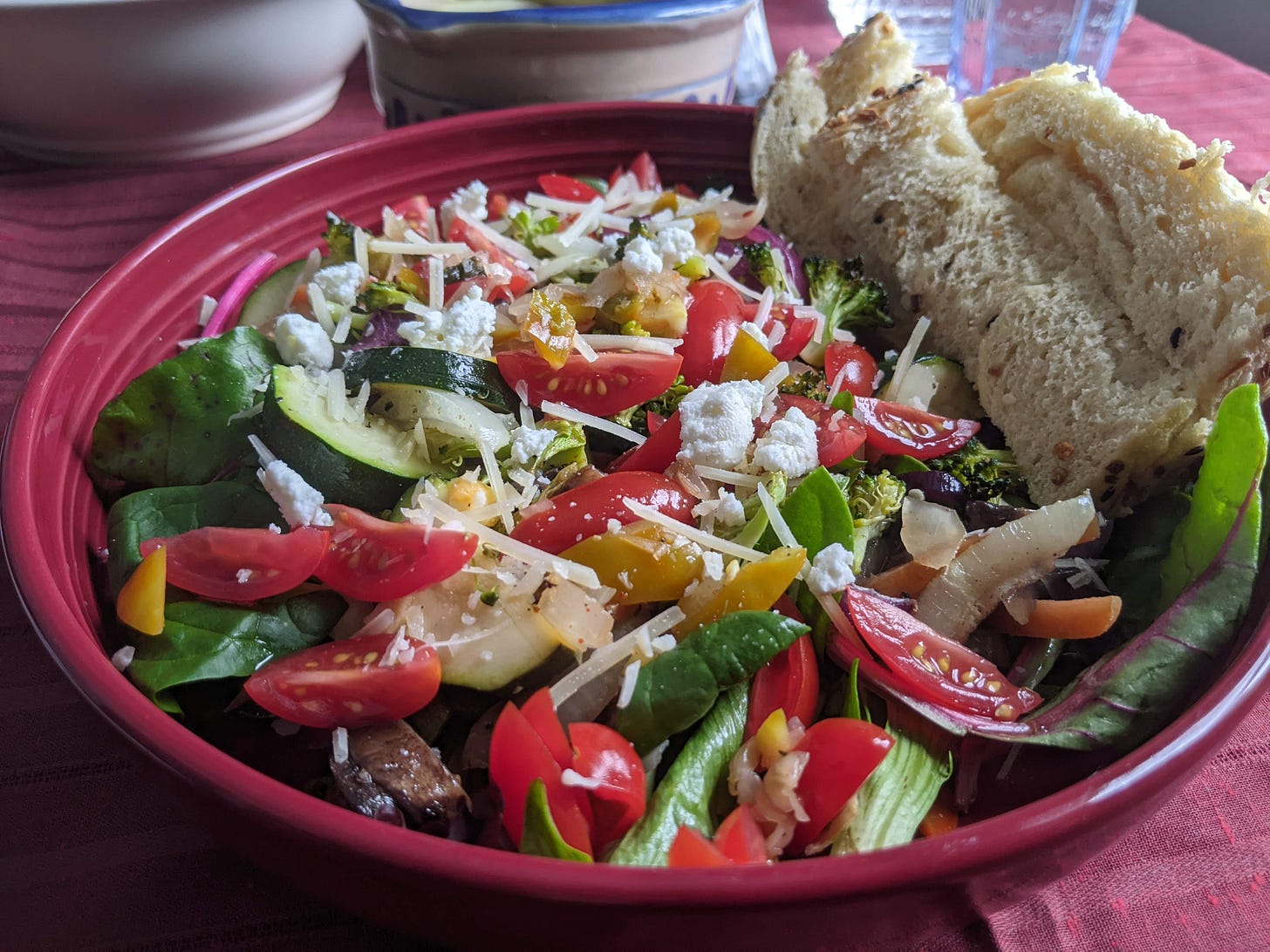






I used to read that people who talked to their plants grew healthier plants. Why not talk (or sing) to the food you're preparing too? A sprinkle of love goes a long way.